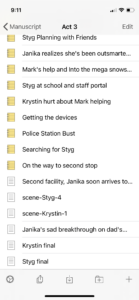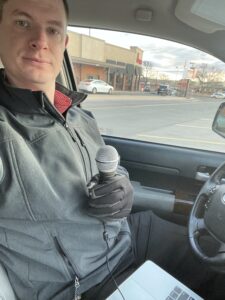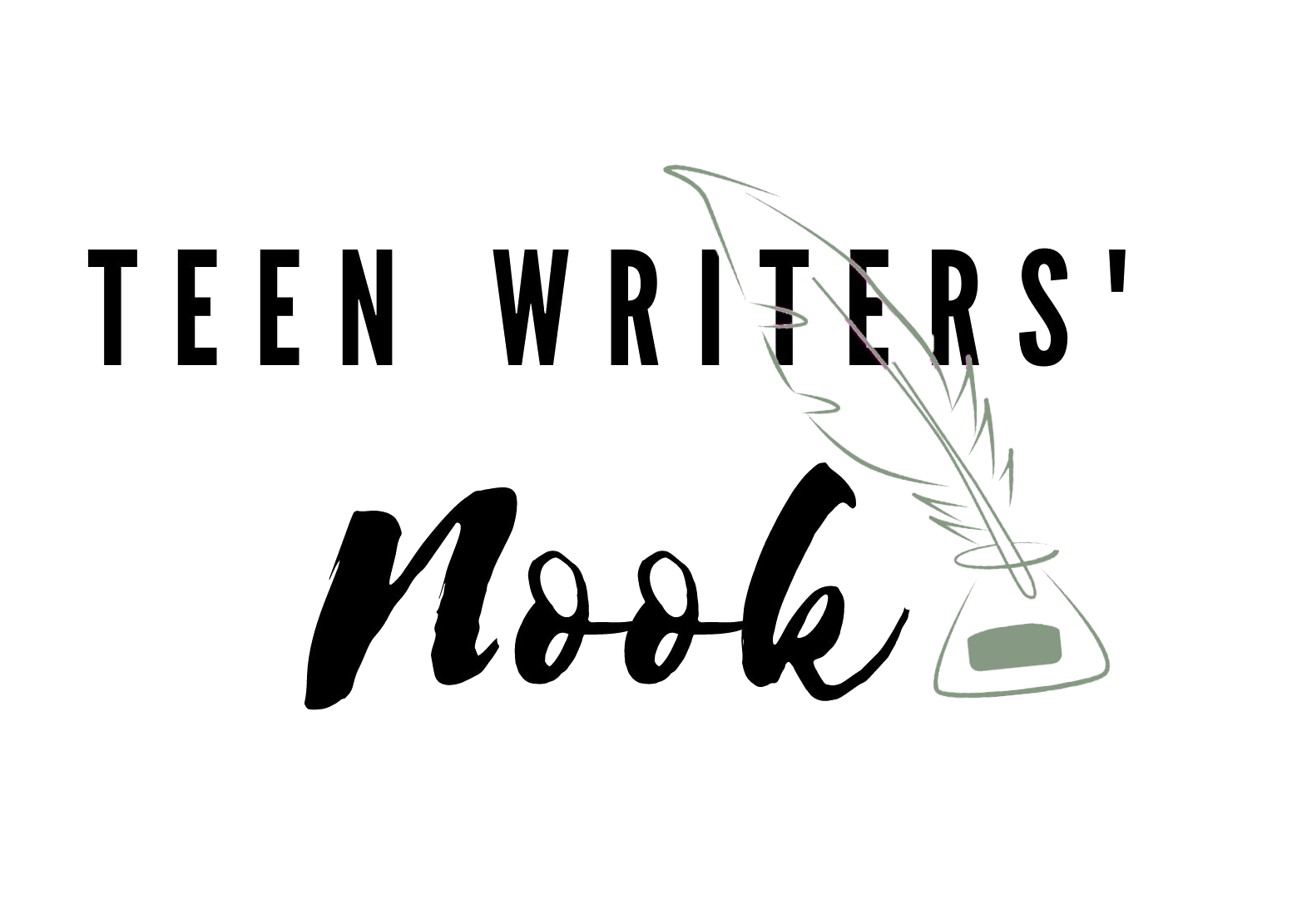Dictation for First Drafts // a guest post by Jeremiah Friedli
Hi, TWNers! Welcome back to another post. It’s been another essay-writing week for me that my brain was so focused on Emperor Commodus and the Roman Empire (#historymajor) that I plumb forget it was Friday. Apparently the real world keeps moving even if you’re mentally in 180 AD. But anyway, I am so excited for today’s post and to be featuring Jeremiah Friedli here on Teen Writers’ Nook. If you don’t know, a couple of months ago he released his debut novel, a YA Christian sci-fi thriller, CORE Deception, and it’s already made it as a Realm Awards 2025 Finalist. You can also read the prequel novella for the CORE series by subscribing to his newsletter. Without further ado, I’m going to let Jeremiah take the spotlight.
Dictation has been around for a long time, but its use by writers has gained more attention in the last few years. Probably because the technology has become more accessible, affordable (even free), and accurate. Some writers love it, claiming it increases their writing speed or curbs writer’s block. Others hate it and won’t touch it.
For me, dictation is a game changer. Years ago, I could barely squeeze 50k words into a November, typing first thing in the morning and late into the night. I’m not a fast typist, and I tend to overthink what I’m writing as I write it. Dictation pushes away my inner editor and frees me up to focus on the story. Plus there are the health benefits—no fatigue of the hands, wrists, and back.
Dictation Defined
So what is dictation anyway? Maybe you’ve seen an old movie where someone important tells his secretary or scribe to write a message. They then verbalize what they want written. These days when we say dictation, it’s just the modern-day equivalent. But instead of a scribe scribbling with a quill pen or a secretary punching on a typewriter, a device like a computer or phone does the writing.
For writers, dictation is simply one tool available to put words on the page. Writing creatively since a kid, I’ve tried many methods to get the words out of my head and onto the paper or the screen. I’ve used pencils and pens with actual paper. I’ve typed on Word, Docs, and Scrivener. And I’ve dictated with my phone, earphones, and a Samson Q2U mic. All have their advantages and disadvantages.
Dictation Apps and Functionality
Back in the day, a writer had to buy special software. More recently, the stock software packages on most devices include dictation. Some are better than others, but often the standard functionality isn’t bad. In fact, that’s all I’ve used.
Each device and OS has a specific way to activate dictation and use it within apps. You should be able to find out with a quick search on how dictation works for your device. Sometimes it stops turning your words into text after a fixed length of time, and sometimes it doesn’t stop until you make it stop.
Another variable is punctuation. Sometimes you have to say “comma” or “question mark” as you speak your words, but other times the software does it for you. I learned dictation back when punctuation had to be spoken, so that’s how I do it. Plus, it gives me a little more control when I choose to get artistic, like making use of M-dashes and sentence fragments.
The program and hardware you use will likely make a difference in the outcome. For example, the microphone on a phone is typically better than the microphone on a laptop, which makes sense considering phones are designed for talking.
It’s also possible that your dictation app will better understand you if using a headset of some kind or an external microphone. When dictating in a stationary position with my laptop, I use my Samsung Q2U microphone. My Mac understands what I say much better that way, requiring much less cleanup afterward. When I’m not with my laptop, like in the car or walking, my phone produces the best results.
Dictating Drafts
My initial draft of my novel CORE Deception was almost entirely dictated, but it was way too long. Like over twice the length of the typical YA sci-fi novel. Talk about a nightmare to edit. I learned the hard way that, while I can easily keep the words flowing when I dictate, it’s also easy to wander with the words. But I also saw it as a type of discovery writing, allowing me to develop my characters and setting.
While CORE Deception was in revision, I decided to write a prequel novella, titled Association, in the same story world. Learning from my wandering problem, I came up with a plan for each of Association’s scenes before I started the first draft—just a quick description of what would happen, plus the POV character’s goal. This approach leans more planner than discovery writer, but I mention it as one example of adjusting tactics to produce a better outcome.

I set a goal of 10k words a week. I had other projects going on, like revising my novel, and didn’t want the drafting of Association to consume all my writing time. Each morning, I turned on my mic and started talking. I didn’t push hard, but I already had practice with dictation and maintained a steady output. Usually, my rate was 2k words an hour. You may be able to type faster than that, but for me this is a serious increase in speed. And I wasn’t exhausted afterward. I really liked that pace for cranking out a new story and hope to use it for my next novel.
Meanwhile, CORE Deception was experiencing some major rewrites. I’d cut a lot of words—like thousands and thousands. And now I found myself in need of more words for entire new scenes. That’s because the plot and characters took a significantly different turn from my first draft. I was on a tight deadline to finish revisions and turn the manuscript over to my line editor. Worse, I was in the middle of a very busy time at my day job. If this sounds like a recipe for disaster, you’re pretty much correct.
Remember that pace I liked while dictating Association? Unfortunately, I couldn’t use that model because of my time constraints. So I pushed really hard…and mostly got it done. Some took place while sitting in my truck, but I also dictated a lot while walking. (That’s another advantage of dictation—the health benefits of physical movement instead of constantly sitting and typing.)
I hit 40k words in two weeks. The writing quality wasn’t great, and I burned myself out temporarily. Next time I have a major rewrite, I must make more time! But it illustrated the opportunity for increased speed, if absolutely necessary. And I feel sure I put out more volume by varying the setting in which I wrote, as mentioned above, which made the process less mentally intense.
Downsides of Dictation
As you probably figured out by now, a downside of dictation is that it doesn’t always correctly understand your words. Which means a text cleanup session is required at some point. Depending on several factors—equipment, sound, and software—there can be a lot of cleanup or very little.
If I review my text soon after dictating, ideally the same day, I can usually figure out any confusing parts. I guess it’s my short-term memory kicking in, remembering what I was trying to say. But if I wait too long, an inaccurate dictation can totally lose me.
Here’s a before and after example from my antagonist’s POV in my novel CORE Deception. This is probably a more extreme situation, but it gave me a chuckle.
Before cleanup: I would y’all the dog my lungs because that’s the only thing I’m capable of doing now after all my injuries, but Walmart here I come in here and waste more time talking about how I need to do this or that.
After cleanup: I would yell at the top of my lungs because that’s the only thing I’m capable of doing now after all my injuries, but Mom would come in here and waste more time talking about how I need to do this or that.
A few times I had to delete paragraphs or sentences because I couldn’t figure out what I was trying to say.
But as I’ve improved at dictation and better understood the tools I’m using, it’s rare I find a section of text I can’t understand. And the good news? There are ways to produce higher quality dictated text in the first place, reducing the amount of cleanup required.
Of course, there’s the wandering problem I already mentioned. When I’m typing and unsure what to write next, I probably sit back and think before continuing. But when I’m dictating, I’m verbalizing what’s in my mind and just kind of keep going. My POV character can end up with pages of mental processing, which is largely my own mental processing as I try to figure out where to take the story next…not so much the stuff of a page-turner.
A lighthearted downside to dictation relates to character names. For a while, my CORE Series had a prominent person named Styg (he later became Seth). Dictating thousands of words each week, I was saying “Styg” a lot. Well, for some reason the name of a coworker sounded similar. At least twice I accidentally called my coworker Styg!
Another funny situation came while attending a Realm Makers writers conference, just after the day’s sessions ended. I stepped into the car and dictated a few more notes on my phone. And then it was time for a quick prayer before I drove back to the hotel. While speaking quietly to God, I found myself inserting a comma and period. In my prayer! Long day? Too much dictation? I don’t know. The good news is, it didn’t bother God. In fact, I like to think He laughed along with me.
Tips to Improve Dictation Quality
Much of this comes down to experimentation. Put another way, it’s about you getting to know your tools (hardware and software) and yourself. Yes, yourself. Until you start using dictation, you may not learn how clearly you speak into a device that’s recording you, which is not the same as conversing with another person. Or you might realize your device struggles to understand your story world’s jargon and unique names. That sort of thing.
In CORE Deception, I initially had a character named Olaf. Apparently I don’t know how to pronounce Olaf very well or my iPhone’s dictation software doesn’t understand that name. It produced a variety of names and non-names: Orville, Olivia, Olive, Alof, oh earth, all of, Aloof. Just part of the fun along the way!
Perhaps it would have been better if I had used a common, everyday name for the first draft and then performed a find-and-replace later to make it Olaf.
I’ve dictated indoors and outdoors, in public places and privately, with lots of background noise and in near silence. I tried watching the text as I talked, versus looking away or shutting my eyes. The results are always appreciated—words in my manuscript. But as you can imagine, generally the quieter the setting, the more accurately your words are transferred as text. Very little cleanup is required when I’m sitting in my vehicle alone, talking into my Samson microphone attached to my computer. (By the way, did you know the vehicles have terrific acoustic qualities? If you’re struggling with too much background noise, try sitting in a vehicle by yourself.)

That said, sometimes the story flows better when I’m walking. This will vary by person, as does everything else dictation, but sometimes I need to be physically moving to help my brain produce words and sentences. If you dictate while on the go, be sure you’re safe and aware of your surroundings. Like don’t accidentally step into the street or dictate while driving in a construction zone.
Conclusion
This is my take on dictation for first drafts, but it’s just my experience. While I’m a fiction writer and more of a plotter than discovery writer, dictation could be used by any kind of writer and has a variety of uses. For example, I often dictate quick notes to capture story ideas that come to mind at random times. And yes, I dictated portions of this post.
So tell me what you think. How have you used dictation for your writing? What have you found to be the pros and cons? Extra points if you dictate your response!
About the Author

Author of the CORE Series and the 2025 Realm Awards Finalist CORE Deception, Jeremiah Friedli is a homeschool graduate, lifelong writer, ice cream lover, and native Texan who can imagine danger just about anywhere and anytime. He enjoys getting out in God’s creation, whether that’s hiking, camping, running, or just reading quietly on the porch. His favorite books—the kind he loves to write—are those annoyingly good page-turners that keep him up long after he really should have gone to bed. When he’s not browsing grocery stores for the latest deals on Blue Bell ice cream and frozen pizza, you might find him seated behind a large screen with one of his beloved spreadsheets or watching a movie with his family. Learn more and connect with him at jeremiahfriedli.com.
About CORE Deception

In a world where the government’s CORE systems see and track everyone, seventeen-year-old hacker Seth Alvarez is determined to save his sister from being placed in a reeducation facility. Armed with a cryptic letter, Seth embarks on a search for the valuable incognito devices—cyber master keys that can set his sister free. But with only three weeks remaining, he finds himself wedged between two powerful forces who will stop at nothing to get the devices first.
Issabelle Perry
Issabelle Perry is a proud Jesus follower, an extroverted writer, and a homeschool graduate. When she's not writing, you can find her reading, jamming to Skillet, studying history, hunting for Narnia in wardrobes, or envisioning herself wielding a magnificent sword (but due to her clumsiness, let’s hope that never happens). This self-proclaimed exclamation mark enthusiast can be found hanging out at Teen Writers’ Nook, a community of teen authors Issabelle co-founded in 2020. She is the author of Don't Let Me Go (Sky's the Limit Press 2024), May We Make Them Proud (2023), and a co-editor for two anthologies. What she’s probably doing right now is fangirling about her favorite books to random people or scanning the pantries for chocolate.

5 Comments
Liz Churchill
Really cool post – I learned so much about diction in writing/drafts. It makes me want to try the process out! 🙂
Jeremiah F
It doesn’t hurt to experiment! That’s how I started. I tried little tasks here and there, like note taking or just a portion of a scene.
Katherine
Thank you so much for sharing about dictation here on TWN! This was so interesting to learn about, and now I’m excited to give dictating a try!
Iona Barton
Wow, this is cool! I dictated a short story once to my sister and it was a whole different experience as opposed to writing in silence. I’m intrigued by the way this would effect depth and style of the story, and really help you get into it! That’s a good idea to save typing too 😀
Thank yuo for sharing your experiences, it was neat! 😀
Jeremiah F
Nice work on the short story! Yes, it sure can feel different speaking versus typing or using a pen. While I haven’t analyzed the differences in style, I’m sure it’s there. But it helps knowing it’s the first draft. Later on, editing can address style consistency if needed.